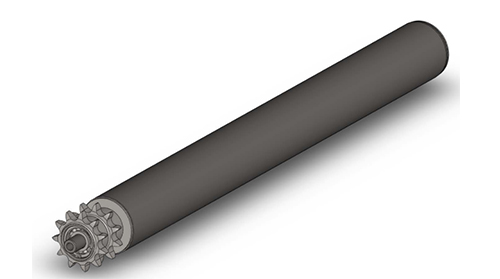Europe
中文
English
Europe
Welcome to Damon Industry Website
Hello, I'm Yong Jun, nice to see you all again.
Let's move on to today's "Applied Research Institute", without further ado.
Today we share with you some new information in regards to "High and low temperature resistant rollers". What kind of application scenario will be helpful? How should the roller be selected? What should we pay attention to? Let's find out.
[Application Analysis]
As a professional parts supplier, Damon Industry provides rollers for the logistics and conveying industry. So, what kind of ambient temperature are these rollers suitable for?
Roughly speaking, depending on the material of the roller components, they can be divided into two categories:
•The designed roller with plastic parts is suitable for ambient temperature, such as -5~40℃, such as 1200 series, 2250 series, etc.;
•The designed roller with steel parts is suitable for ambient temperature, such as -20~80℃, such as 1800 series and 2321 series.
These rollers meet the common requirements of most applications.

However, we have also encountered application scenarios beyond the above temperature range. According to Yong Jun's understanding, the two most representative environments are: high-temperature ovens and cold storage.
•High-temperature ovens in which the ambient temperature can be as high as 150°C or even higher.
•In the cold storage, the ambient temperature will be as low as -25~-30℃.
So, aiming at these two special working conditions, we need to have a new plan to deal with the roller.
[Research results]
When the ambient temperature exceeds 80℃:
As a solution, we can choose a series based on steel components (or bearing seats), such as 1800 series, 2311/2321 series, 1A00 series, 2A21 series, etc.
In addition, we need to replace the standard bearings with high-temperature resistant bearings. The resulting "high-temperature resistant rollers" can increase the applicable ambient temperature limit of the rollers to 180°C.
However, it should be noted that, in addition to the above changes, the plastic chain cover and nylon retaining ring on the standard roller that cannot withstand high temperatures will also be removed. Therefore, there is a slight difference in the appearance of the "high-temperature resistant roller".

When the ambient temperature is below -20°C.
The main problem with rollers at low temperatures is that the lubricating grease in the standard bearings can "freeze" at low ambient temperatures, causing the bearings to rotate poorly.
As a solution, we will replace the standard bearings with low-temperature resistant bearings, so that the lower limit of the roller's temperature resistance is reduced to -30°C. Of course, we will still use the steel component (or bearing housing) series for the roller body.
In addition, according to Yong Jun's own experience, cold storage below 0°C is often accompanied by the phenomenon of water vapor condensation. And galvanized rollers usually cannot maintain a high level of rust resistance for a long time in an environment with water vapor. In severe cases, rusting may contaminate the conveyance and the site environment. Please check "What is all stainless-steel conveying roller" in the [Applied Research Institute] series written by Yong Jun, which contains information regarding the use of rollers in wet environments.
OK, the above is the result of the research on "high and low temperature resistant rollers", I hope it’s helpful.
We will see you next time!

